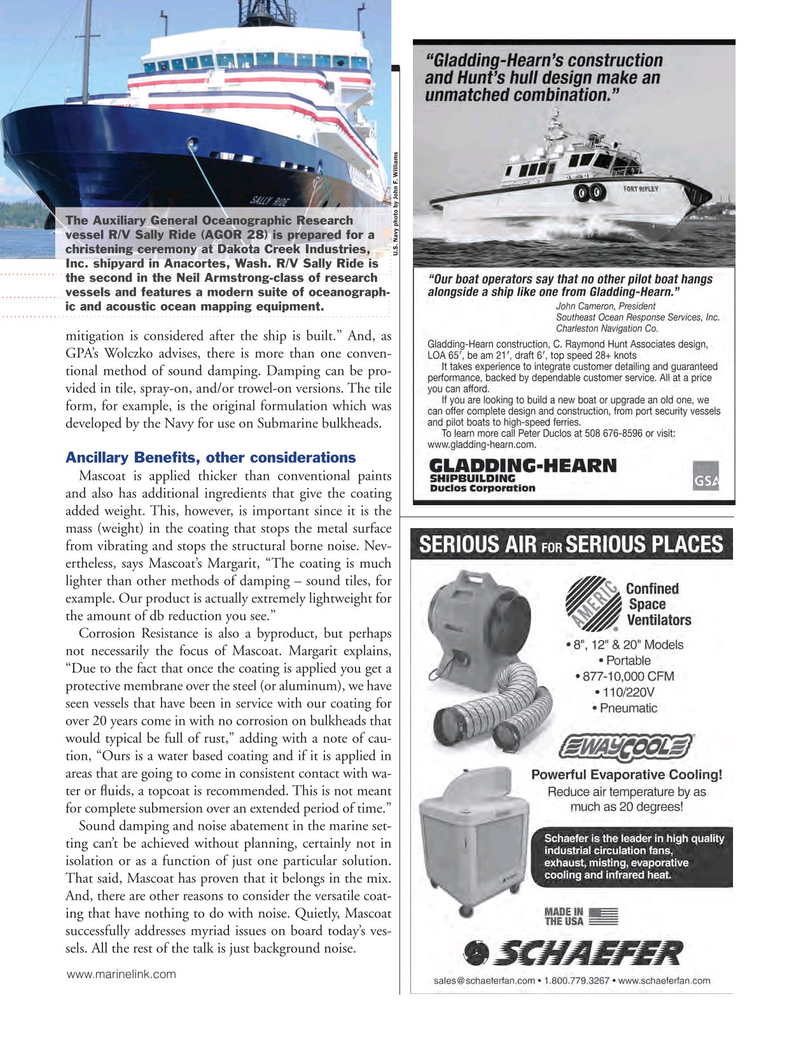
Page 47: of Marine News Magazine (April 2015)
Shipyard Report: Construction & Repair
Read this page in Pdf, Flash or Html5 edition of April 2015 Marine News Magazine
The Auxiliary General Oceanographic Research vessel R/V Sally Ride (AGOR 28) is prepared for a christening ceremony at Dakota Creek Industries,
U.S. Navy photo by John F. Williams
Inc. shipyard in Anacortes, Wash. R/V Sally Ride is the second in the Neil Armstrong-class of research vessels and features a modern suite of oceanograph- ic and acoustic ocean mapping equipment.
mitigation is considered after the ship is built.” And, as
GPA’s Wolczko advises, there is more than one conven- tional method of sound damping. Damping can be pro- vided in tile, spray-on, and/or trowel-on versions. The tile form, for example, is the original formulation which was developed by the Navy for use on Submarine bulkheads.
Ancillary Bene? ts, other considerations
Mascoat is applied thicker than conventional paints and also has additional ingredients that give the coating added weight. This, however, is important since it is the mass (weight) in the coating that stops the metal surface from vibrating and stops the structural borne noise. Nev- ertheless, says Mascoat’s Margarit, “The coating is much lighter than other methods of damping – sound tiles, for example. Our product is actually extremely lightweight for the amount of db reduction you see.”
Corrosion Resistance is also a byproduct, but perhaps not necessarily the focus of Mascoat. Margarit explains, “Due to the fact that once the coating is applied you get a protective membrane over the steel (or aluminum), we have seen vessels that have been in service with our coating for over 20 years come in with no corrosion on bulkheads that would typical be full of rust,” adding with a note of cau- tion, “Ours is a water based coating and if it is applied in areas that are going to come in consistent contact with wa- ter or

 46
46

 48
48
